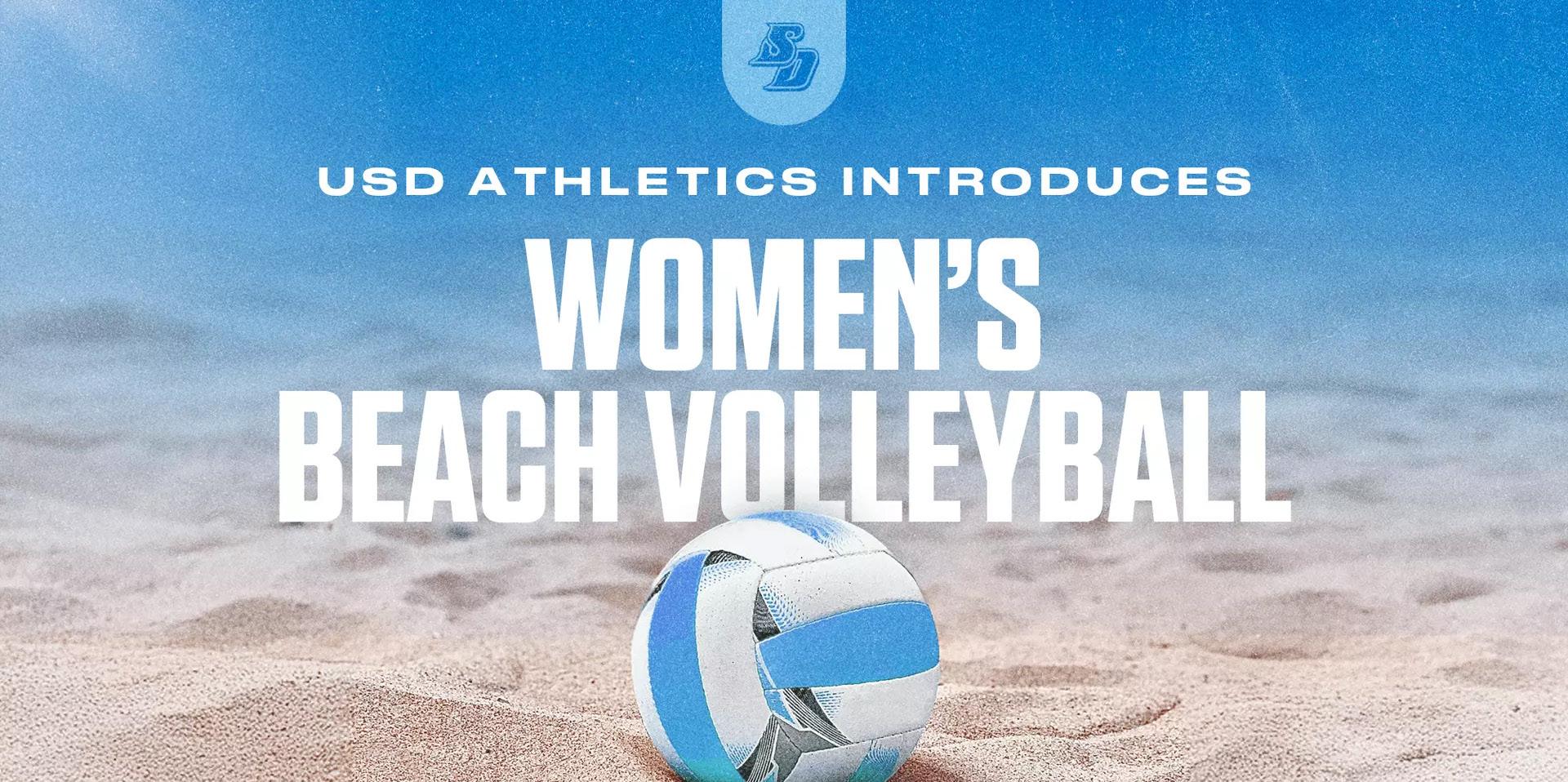
The Official Student Newspaper of the University of San Diego since 1968


The Official Student Newspaper of the University of San Diego since 1968
The University of San Diego will be the first institution in San Diego to sponsor a collegiatelevel women’s beach volleyball team. This newly formed NCAA Division 1 beach volleyball program plans on competing in the WCC conference against teams like Loyola Marymount, Pepperdine and Saint Mary’s, hoping to immediately compete for championships.
USD is currently the eighth team within the league to promote a beach volleyball team, naming it the 18th varsity sport and 10th women’s sport at USD. According to USD Athletics, this new addition is supported by the Jansen family, whose goal aligns with USD to allow women athletes to compete at the highest level possible, while attending one of the top 50 schools in overall value in the nation according to The Wall Street Journal and College Pulse.
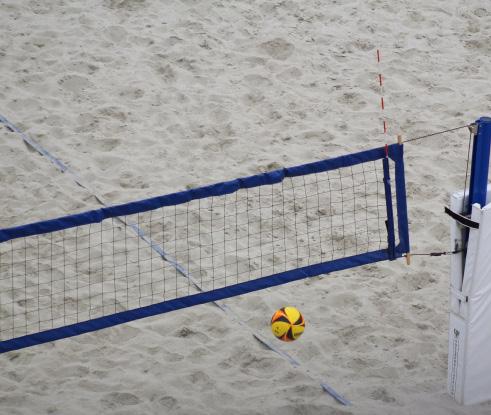
USD’s new head beach volleyball coach, Derek Olson, who previously coached at the University of Washington and played professionally on the Association of
champions, LMU. He also founded the Kelso Volleyball Club and directed for the Coast Volleyball Club here in San Diego, showing that he has strong ties to the city. The program aims to focus on recruiting local talent soon, so it can be competitive from its first season.
In an interview with CBS8, USD Executive Director of Athletics Kimya Massey discussed the new addition of the fastest-growing women’s sports teams according to NCAA.
“Frankly, I think we can win a national championship here,” Massey said. “I’ve said since I got this job, we should be one of the more competitive mid-majors in the country. And this is another piece of that because I really feel like we can win at this sport at a very high level very quickly.”
Massey also highly praises the beach volleyball scene in San Diego and how it is something that should be taken advantage of quickly.
“You know, if you look at the club volleyball scene in San Diego, it’s literally the best in the country,” Massey stated. “The Wave and The See Volleyball, Page 12
CADEN HAYNOR NEWS EDITOR
USD changed the school rules on the policy and general approval process for campus assembly on Sept. 8. These changes were sent in a statement released by the Department of Public Safety (DPS) and primarily included the inability for students to hold assemblies in the Paseo de Colachis and a fivestep system to requesting and approving assembly, including a ten-day waiting period.
These changes specified how members of the USD community can request and hold an assembly, which they defined as a rally or demonstration in order to exercise free speech or dissension. Changes to these rules have not been made for fifteen years.
The school policy governing assembly on campus was updated in Aug. 2025. The policy goes over the exact guidelines on how to conduct assemblies, who is responsible for them and how to invite visitors and guest speakers to on campus assemblies.
USD changed the way that
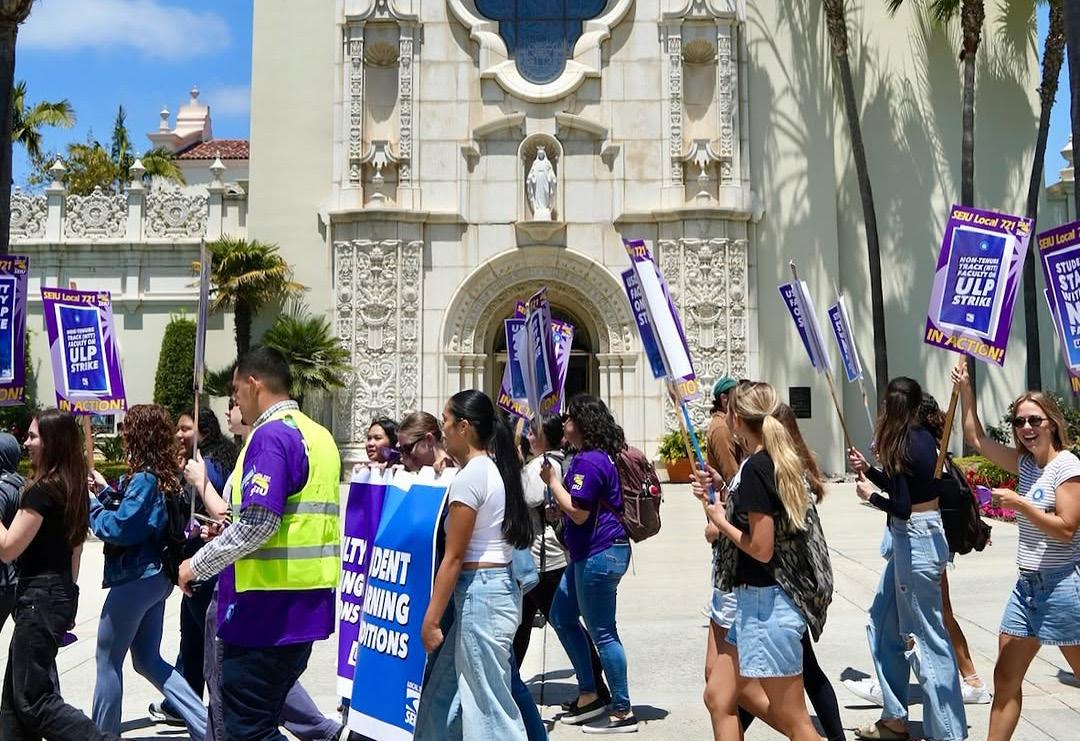
requests for student assemblies are reviewed and approved. They also made available a step-by-step guide that outlines University policy for students to follow.
When the original policy was written, University Operations
was not a division in USD, and Student Affairs was the division reviewing all requests. USD explained what this means for reviewing requests for assembly from the USD community.
“Originally, Student Affairs

was the only unit listed in the policy reviewing all requests, USD outlined. “With the creation of University Operations, requests from employees (staff and faculty) are reviewed by that unit.”
From Protests, Page 1
Another significant change to the policy is the dedicated locations for assemblies on campus. Now, there are two locations open to approved assembly: the Mother Teresa Plaza – in front of the Student Life Pavillion and the Garden of the Sky plaza – behind the Joan P. Kroc Institute for Peace and Justice. The policy also states that the ability to conduct an assembly does not include an activity that significantly impedes other events, such as lectures, ceremonies or interviews, that prevent access to other facilities or that interfere with other scheduled events at the University.
If an assembly violates the policy, then the participants will be told to stop the disruptive activities, and if the activity persists, the policy states that Public Safety or police department intervention may be called in. The policy also states that off-campus visitors looking to engage in assembly must be invited by the organizer and approved by the Vice President of Operations Ky Snyder.
Luke White, a USD sophomore who engaged in various demonstrations with the non-tenure track faculty union last year, outlined his view on these assembly guidelines.
“These updated rules seem too strict for assembly on campus,” White stated. “I feel like an assembly is meant to cause some disruption, so it actually spurs action. If no
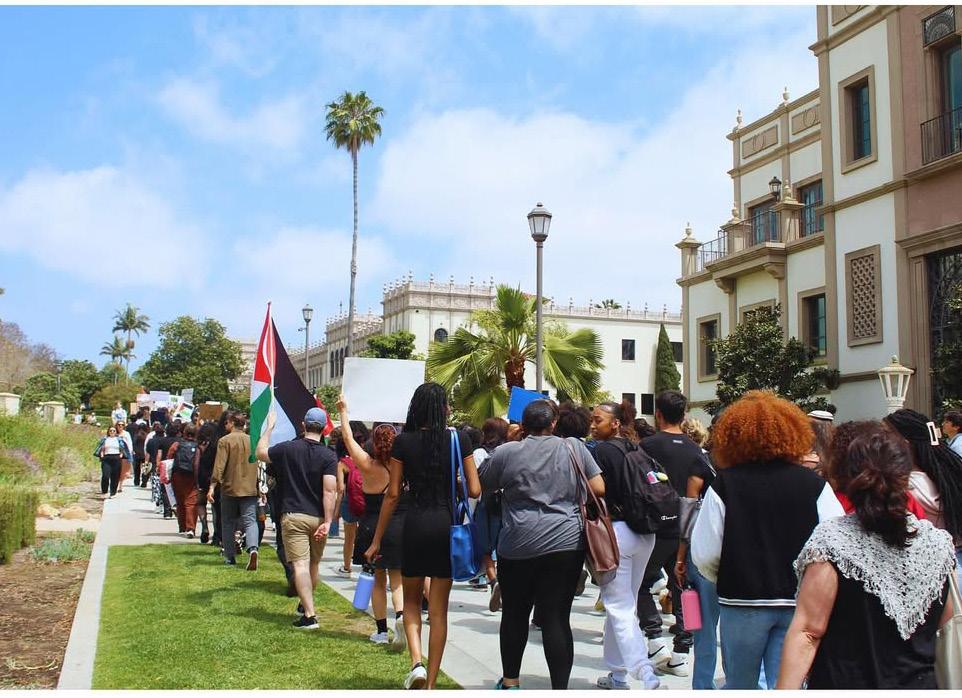
one is bothered by a protest, then it didn’t really do its job.”
In the email notifying students of the updates, DPS included a link to the newly updated step-by-step guide to the approval process for members of the USD community looking to
initiate an assembly. This fivestep process consolidated the policy into a more digestible list.
The first step is to contact campus scheduling, second is to request off-campus guests or visitors, third is to choose from the designated locations
and times (8 a.m. to 10 p.m.), fourth is to wait for review and approval by Campus Scheduling and the vice president of Operations and fifth is to appeal if the request is denied. Each request must be sent at least 10 business days
before the event takes place.
As the modern American political climate continues to stir, and college campuses hold protests and peaceful assemblies, USD students will have to take these policies into account when they assemble.

DAVID COOK ASST. NEWS EDITOR
Unionized non-tenure track (NTT) faculty in the College of Arts and Sciences (CAS) at USD have reached a tentative agreement with USD administration that includes significant pay increases, stronger worker protections and new opportunities for advancement.
If ratified, this will be the first union contract in USD history. For union leadership, the contract represents a breakthrough after over a year of official bargaining and last spring’s strike. In May 2025, faculty held a two-day unfair labor practice strike protesting the University’s cancellation of courses without bargaining, lack of job security and low pay for non-tenured staff. Soroya Rowley, a NTT professor of theatre at USD, is a negotiator for the union. Rowley explained what this contract agreement means for the union as a whole.
“This is a historic victory,” Rowley stated. “CAS NTT faculty will now have stronger pay, more dignified working conditions, and better policies for promotions and teaching contract renewal. We hope this agreement will set new benchmarks and help to raise standards for all faculty members at our University.”
The contract introduced a new wage scale with average raises of 18% to 20% over four years. It also includes new safeguards for job security, and establishes clearer pathways for promotion and advancement. A new safeguard is an appeals process for faculty whose contracts are not renewed. A professional development fund will also provide support for research and conference travel.
USD senior David Szluk explained how this agreement might affect his academic life.
“One problem I’ve frequently encountered are very limited office hours windows for professors and if for instance you have class during that time, you are just screwed,” Szluk explained. “Increasing availability for these things would allow more students to get one-on-one time with their professors which can generally benefit the student body.”
For Dr. David Miller, an assistant professor of history who has been at USD for more than 20 years,
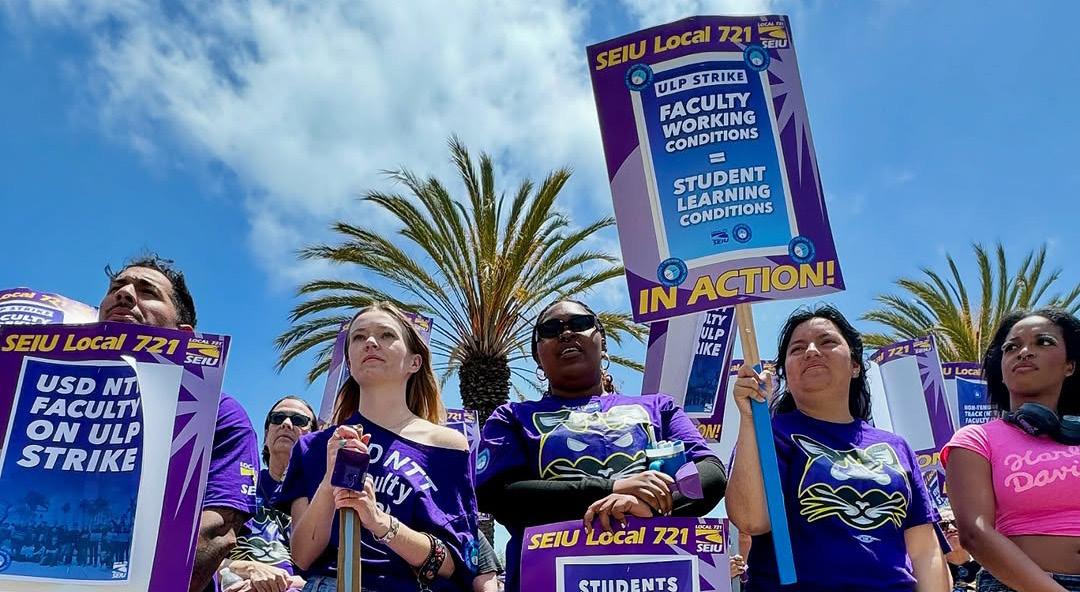
joining the union was both personal and philosophical.
“I just thought it made sense,” Miller stated. “Non-tenure track faculty are a permanent part of higher education now. I thought that USD, like most colleges and universities around the country, had gotten out of alignment with the reality of non-tenure track. The reality is that the non-tenure track teach half the classes on average around the country and they’re [on campus] longer. It is more of a career than it was maybe 20 or 30 years ago.”
When it comes to the tentative contract, Miller believes it hits the core goals.
“I think it really is good,” Miller said. “I think it is a strong contract, especially for a first contract. Overall, I think people are very satisfied with it. It addresses those big issues.”
The University of San Diego stated their stance after a year of bargaining with the NTT union.
“We value the tremendous contribution that our NTT faculty members make to our university,” USD explained.
“For nearly a year we have made extraordinary efforts to bargain in good faith with the representatives of the NTT CAS faculty union. And we have an obligation to ensure that our university remains financially sustainable in order to fulfill our mission. At the heart of that mission, as always, is our students. We thank all involved for their time and diligence throughout the
collective bargaining process, and moving forward, together.”
Miller noted that reaching the agreement did not come without trade-offs. Faculty and administrators both had to make sacrifices to arrive at a deal.
“I think both sides, the University, and the non-tenure track, we both had to concede some things,” Miller said. “We had to compromise. We had to work things out. And, you know, the university gave a little and we gave a little.”
Union leaders acknowledged that not every priority made it into the first contract. Rowley said one of the hardest concessions for faculty involved healthcare.
“An example of something
we had to concede to on the union side that was tough was we really wanted to create a pathway for more of our professors to access health benefits,” Rowley said. “That is something we hope to address in the next contract.”
Rowley added that while the union has aspirations to make more progress on basic health services.
“We did get some additional access to the vaccine clinics that happen on campus,” Rowley said.
These unresolved issues could raise questions among faculty about whether the agreement went far enough.
Miller acknowledged those concerns but said he views the cost as justified.
“For those closer to the bottom, it absolutely is worth it mathematically, because their raises are going to be well over 20%,” Miller continued. “My position is I am personally willing to pay dues so that my colleagues and my friends can get a vaccine, can have higher wages and can have some job security. For me, it is absolutely worth it.” The contract will only take effect if the faculty ratify it. Online voting began Friday, Sept. 9, with in-person voting open Sept. 22–26. While some professors appear to be on board with the agreement, the final measure of support will come through the vote itself.
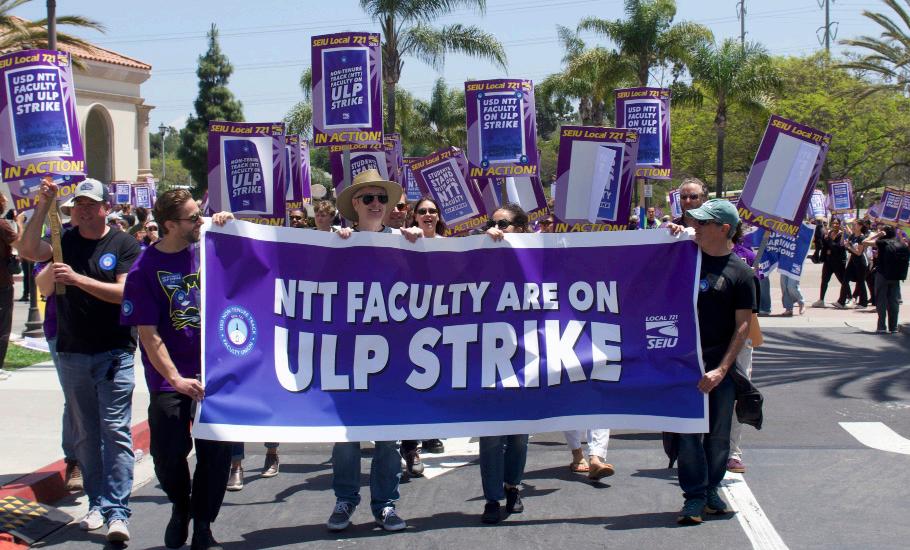
EMMA PIRHALA MANAGING EDITOR
Late night television has often been associated with celebrity guests, viral videos and chaotic challenges. However, a new trend is emerging on these small screen shows: censorship. Disney’s ABC announced that they were pulling “Jimmy Kimmel Live!” off the air. After the cancellation of “The Late Show with Stephen Colbert” in July, the recent removal of “Jimmy Kimmel Live!” is the latest move in a nationwide shift towards censorship.
This came in response to Kimmel speaking out about the assasination of the right-wing conservative podcaster, Charlie Kirk, during his show on Sept. 15.
“We hit some new lows
over the weekend with the MAGA gang desperately trying to characterize this kid who murdered Charlie Kirk as anything other than one of them and doing everything they can to score political points from it,” Kimmel said on air.
There was immediate retaliation from the Federal Communications Commission (FCC), the government agency responsible for monitoring the media, with Trump-appointed FCC Chair Brendan Carr speaking out about the comment.
“It was not making fun,” Carr said. “It was appearing to directly mislead the American public about a significant fact that probably one of the most significant political events we’ve had in a long time, for the most significant political assassination we’ve seen in a long time.”
Although “Jimmy Kimmel

Live!” was eventually reinstated on Sept. 22, with a return date for the following Tuesday, the damage had already been done. USD sophomore Jocelynn Jaregui expressed her stance on the cancellation.
“I think it’s crazy for them to cancel the show,” Jaregui said. “I am scared for what the country is moving to. I think more people should be outraged about it. Because it’s only what this administration wants.”
Propelled by discourse at the federal level, other talk show hosts are becoming increasingly fearful of government backlash. However, in late show fashion, many turned to making jokes about the situation to ease the tension.
Colbert joked that the “late nightmare is over,” and commented that “martyrdom ain’t big enough for the both of [them].”
Despite the return of Kimmel’s show, media conglomerates Nexstar and Sinclair refused to air his show on their ABC affiliate stations.
This comes as Nexstar seeks to acquire Tegna, a media company. The transaction would require
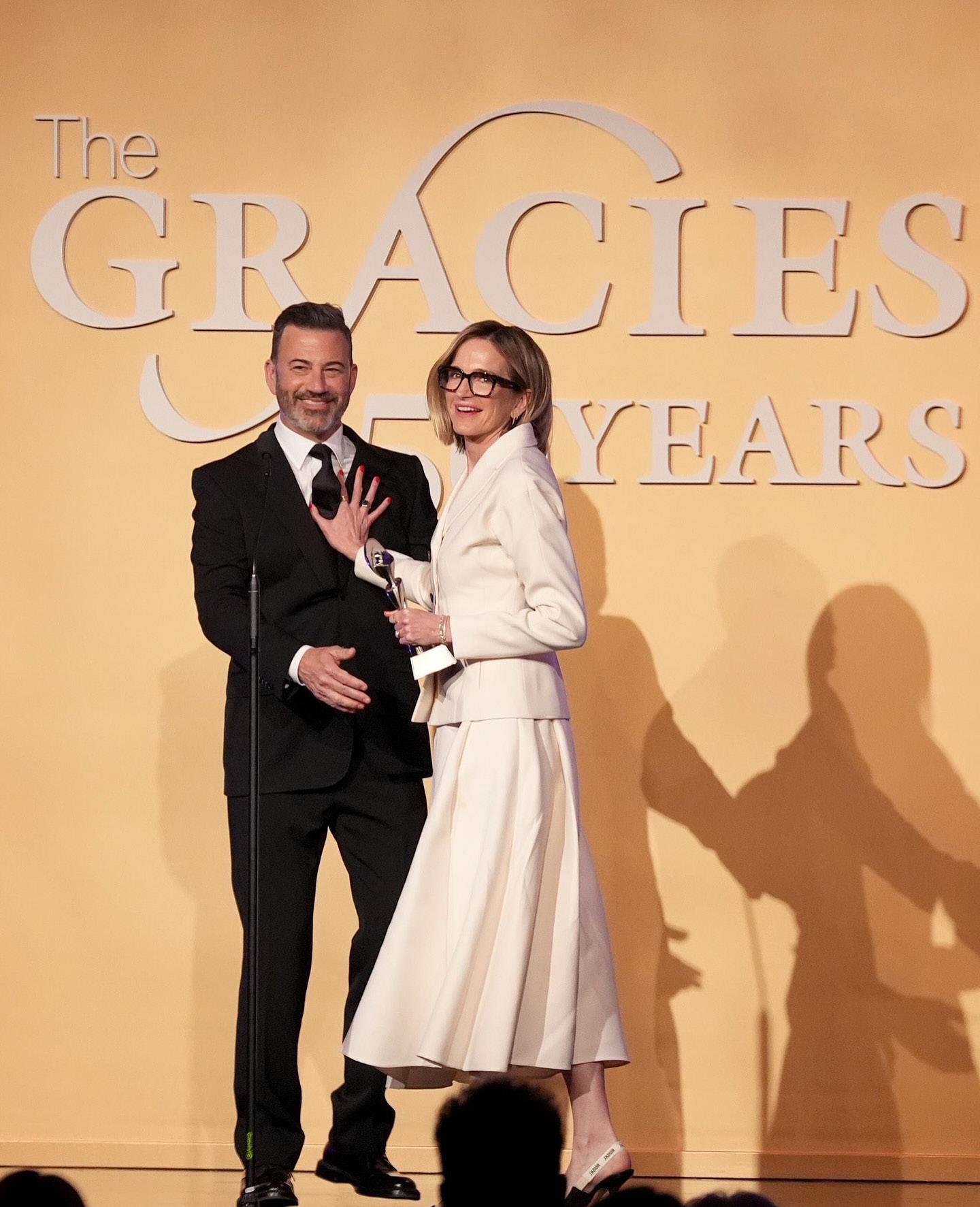
approval from the FCC, since it would breach the maximum market share regulations.
Kimmel’s return,
although short-awaited, forces some to rethink their views on government intervention in the media.
LARA DOMINIQUE SOLANTE COPY EDITOR
This is the youngest country in the world
3. This state is directly above Tennessee
The train that goes up and down the California coast
6. The name of one of the most famous Renaissance portraits painted by Leonardo da Vinci 7. This bird rises from the ashes
8. A group of lions is called a
10. “Silly rabbit, ____ are for kids!”
2. This movie has a character that sports a USD sweatshirt
5. This cold biome is characterized by low temperatures and precipitation, and short growing seasons.
7. Another word for “chicken”
9. The title of Mary Shelley’s 1818 gothic novel, alternatively titled “The Modern Prometheus”
11. In golf, a ____ is an extra stroke unpenalized.
12. This animation studio’s introduction shows a lamp jumping on the letter “i”
13. This creature defecates in the shape of a cube
RILEY RAINS
ARTS & CULTURE EDITOR
While rain pattered on USD windows, students hosted watch parties and gathered around their TVs for the spectacle of the week: “The Summer I Turned Pretty” finale. With some swooning over Conrad and others crushing on Jeremiah, Toreros everywhere were anxious to discover who the main character Isabelle, or “Belly,” would end up with.
The Prime Video original series is inspired by a book trilogy that flew off the shelves right after it was released in the early 2010s. Jenny Han, the author of the books, decided to collaborate with Prime Video to develop the show that many Toreros know and love. The first episode was released in 2022. The series held fans waiting for this finale for about three years.
The final episode drew fans to the big screen, but not everyone was happy with the ending. USD sophomore Skylar Grani shared her grievances.
“[‘The Summer I Turned Pretty’] had a f---a-- ending,” Grani snapped. “It really upset me how we didn’t get a lot of Conrad and Belly time at the end. Hopefully the movie will fix that.”
In the last season, fans complained that Han showed a significant amount of Jeremiah, saving barely any crumbs for Conrad. Throughout the majority of season three, Belly was either dating or engaged to Jeremiah. This relationship caused a lot of build up for the conclusion, which some students think was less than exciting. USD sophomore Sonya Yelagin explained her thoughts.
“I feel like it was pretty predictable,” Yelagin shared. “I don’t like how Belly switched up in three seconds, but other than that I was rooting for this relationship.”
The premise of “The Summer I Turned Pretty” is a love triangle between
Belly and two brothers: Conrad and Jeramiah. The childhood family friends grew up together, visiting their beach house every year; Belly’s slogan in every episode is “Winter didn’t count, summer was what mattered.”
Throughout the series, the Fisher brothers are constantly fighting for Belly’s heart.
The feud between Conrad supporters and Jeremiah fans is remarkably widespread. In San Diego, you can spot two tip jars at the Chula Vista Dutch Bro’s, one “Team Conrad” and the other “Team Jeremiah.” CC Cacabelos, a USD University Minister even has a shirt with Conrad plastered all over it and wore it at the University Ministry Pre-O retreat.
Conrad, a yearning medical school scholar, is older than Jeremiah. Jeremiah is apparently an aspiring chef and dated Belly for years after the Fisher’s mother died, a pivotal moment in the TV show’s plot. USD junior Ella Fitzpatrick pledged her allegiance to Conrad.
“I will ride with Conrad to the grave,” Fitzpatrick shared. “I think he is misunderstood, and if you are not team Conrad then what are you doing? I think his story is so heartbreaking, and let’s remember that he had Belly first. He just shows so much growth.”
In these final episodes, Conrad had to watch his brother propose to Belly with a minuscule ring, all after Jeremiah cheated on her. He was in a quandary — stuck between his romantic yearning and brotherly duty.
After starting therapy and moving across the country to give Jeremiah space, Conrad finally confessed his love the day of Belly’s wedding. Yelagin saw in Conrad’s eyes that he was her soulmate.
“I was always team Conrad,” Yelagin stated. “He looks at her like he’s in love, and they just had better chemistry throughout the whole show. You could just tell he was

always genuinely in love with her and he was never forcing it.”
Season three included a whirlwind of broken-off marriages, scream battles and dramatic airport scenes.
Despite Belly being the main character, some students thought that she was the one causing the drama.
After she moved to Paris, she managed being alone for the first time in her life.
Fitzpatrick is currently abroad in Ireland, and she admires Belly for her bravery.
“I liked how she found herself in Paris,” Fitzpatrick explained. “Being in a new country is intimidating and Belly definitely needed the experience.”
One unique feature of the romance is the songs. Pretty much every scene that involved
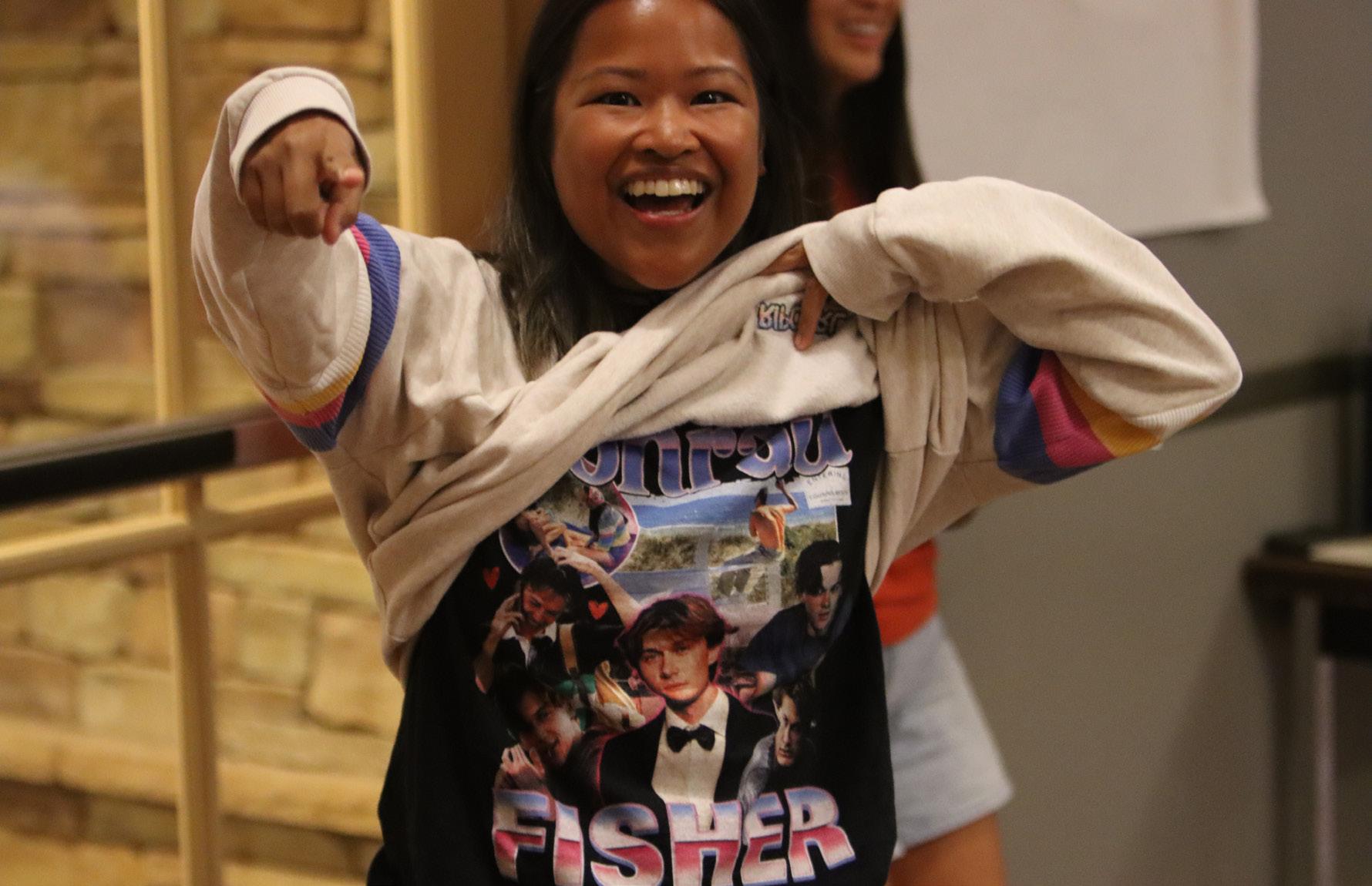
music included artists that are wildly popular: spanning from Taylor Swift to Phoebe Bridgers and even Sabrina Carpenter. This stylistic choice is not something ignored by fans. Humphrey shared her thoughts on the song selection.
“I think the choice of music very much added to the appeal for the target audience, because a lot of the audience is younger women who are ‘Swifties,’” Humphrey said. “As one myself, for me when Taylor’s songs are used in certain scenarios it adds to the feeling and makes moments more intense. It is also fun for fans waiting to see which songs will be used.”
Fitzpatrick looked at the music as a strategy.
“It was a really smart marketing choice for both the female artist and the ‘The Summer I Turned Pretty’ producers. The show is huge, and it’s not every day that you hear song after song that you know. It definitely brought in more people … A lot of teenage girls can relate to these lyrics.”
For all of the Toreros crying over no more Wednesdaynight episodes — don’t fret.
Han will be creating a feature film continuation of “The Summer I turned Pretty.” She is planning to co-write the script with Sarah Kucserka, who helped produce the TV series. During a press release hosted by ABC, Han hinted at her plans for the movie.
“There is another big milestone left in Belly’s journey, and I thought only a movie could give it its proper due,” Han exclaimed.
Belly and Conrad’s continued adventures were teased in the ending monologue: cut-out pictures of the happy couple wrapped in wool, enjoying a “Noël romantique á Paris.” Fans are at the edge of their seats hoping for a wedding — one that isn’t called off. However, the official content of the movie is unannounced. Whether Toreros pledge loyalty to Team Conrad or defend Jeremiah’s case, the debate shows no signs of fading. Even with the series finale behind them, students will keep swooning, sparring and speculating until Belly’s story hits Prime Video.
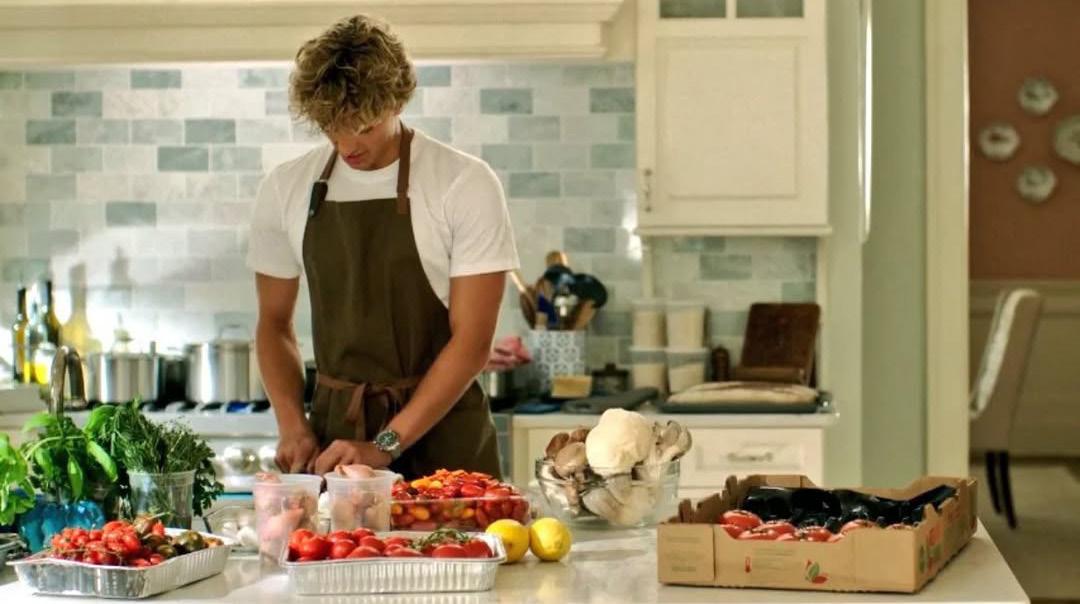
I never leave home without the brace let my girlfriend gave to me because it remi nds me not to take for granted the support I receive from the people arou nd me.
-Mantas Palubi nskas, first-year
What is one thi ng you never What is one thi ng you never
Toreros share the items t to them in their daily lives state of mind that keeps carry more value to tho reali
For me it wou ld be headphones. After a long day of class or after class, I just wanna escape because I fee l so stressed … I can use my headphones when I’ m wal ki ng to class or sometimes i n class if we ' re do i ng nothi ng.
-Vanessa Jimenez, sophomore
My phone Because you ne cou ld happen. If somethi n home and for whatever case of an emergency an to cal l me and I don’t have wou ldn’t know. Checki ng always checki ng the time. – I always forget my sched check … And for music – mu
-Gise l le Garcia, sop
r leave home without?
r leave home without?



that are most important s. Whether physical or a them going, some things ose around us than we ze.
ever know what g happens back reason, i n the d my mom needs e my phone then I g the time– I’ m And my schedu le du le and need to usic is my life li ne.
phomore “

“ “
I always bri ng a jacket no matter if it’ s real ly hot.
-Charlie Rodriguez, senior
-Joe l le Alex, ju nior “ “
I fee l like a typical answer is your phone, but for me personal ly, I literal ly can ’t go anywhere without my favorite lip balm. She stays with me everywhere My Su mmer Fridays lip balm, she goes with me everywhere.
AMELIE SEDLACK FEATURE EDITOR
USD hosted the Alcalá Bazaar, the club fair for students held at the start of every semester. The Alcalá Bazaar presents students with every club – affinity groups, fraternities, sororities, intramural sports and interest groups – on campus that students can choose to join. Here, students can meet friends, find a group they feel belonging with and find groups that share their same interests and values.
USD senior Courtnae Moran shared her thoughts on the Alcalá Bazaar.
“I also think it’s a great way to explore new clubs on campus,” Moran said. “They always have such fun things to give out. You can meet new people too because everyone is there. It’s always so busy and I love it. It’s just a super great way to get to know USD and what’s going on currently.”
The Alcalá Bazaar has something for all students of all years. No matter how many times they return, there is always a new club for students to find and join.
“There’s so many that we have here,” Moran said. “I mean, people are so creative these days and they always come up with so many. So there’s always room for more.”
LJ Quattlebaum, a USD sophomore, spoke on his experience at the Alcalá Bazaar.
“They have every club I can think of,” Quattlebaum said. “I was walking through and there were clubs I would have never even thought about. Honestly, I think they did a pretty good job.”
USD sophomore Tristen Pecevich recalled his time walking through the rows of tables at the Bazaar.
“I feel like they have a million clubs here,” Pecevich said. “They have literally everything.”
USD first-year Jaedyn Kaylor reflected on her first experience with the Alcalá Bazaar.
“It definitely helps underclassmen get engaged with the different clubs,” Kaylor recalled. “I don’t think I would have known about the hiking club if I didn’t come to this. I think it was a very good way for me to get involved.”
USD junior Joelle Alex explained why she continues to return to the Alcalá Bazaar every semester.
“As I progress more through USD, I feel like I realize how many things are out there, things that
particularly interest me,” Alex said. “Being able to see that on campus, at Alcalá Bazaar, is also really nice. Also, being able to outreach and get to meet new people ... who are also interested in the same things as me.”
Because the Alcalá Bazaar returns every semester, students have the opportunity to try out many clubs at once and re-sign up for clubs they weren’t originally as involved with.
Pecevich explained his agreement with this.
“I would look for a philosophy club,” Pecevich said. “I signed up for that last Alcalá Bazaar and didn’t go to any of them.”
While many students find plenty of clubs to get involved with, there are also students who don’t see their interests represented in the options presented to them.
Jaden Abara, a USD first-year, recalled her first time at the club fair.
“I want to look for more fun clubs,” Abara said. “I saw a lot of hobbies clubs but none that … drew my attention. I didn’t see a … music-playing club.”
USD first-year Emma Cruz-Colin also found herself hoping for more clubs that shared her interests.
“Probably more creative clubs,” Cruz-Colin said. “I saw a lot of sorority clubs and sports clubs but I was looking for more – not artistic but, for example, crochet club, or painting club or ceramics club. Or something more creative.”
While Alex found her place among the many clubs and organizations, she spoke of others who are still searching.
“I’m on the e-board for the African Student Union and one of our newest members talked about how she would like to see an African dancing club,” Alex explained. “Maybe a couple more cultural clubs that are nicher to certain other interests. Something like design or dance I think would be a good addition to Alcalá Bazaar.”
Fortunately, students are not limited to only the clubs that are out at the Bazaar.
USD also encourages students to make their own clubs.
Moran spoke on her thoughts of creating her own club.
“I know a couple people who have [started a new club],” Moran said. “I think it’s a pretty interesting thing to do. I don’t know if I would, just because it’s a lot of time but I think it’s something that is very doable and I feel like the University is very supportive of it.”
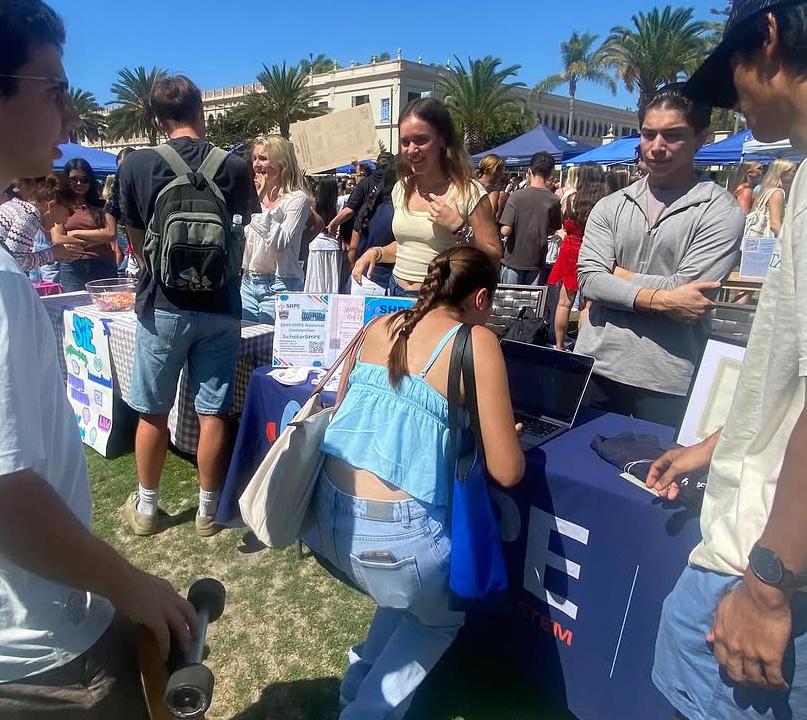
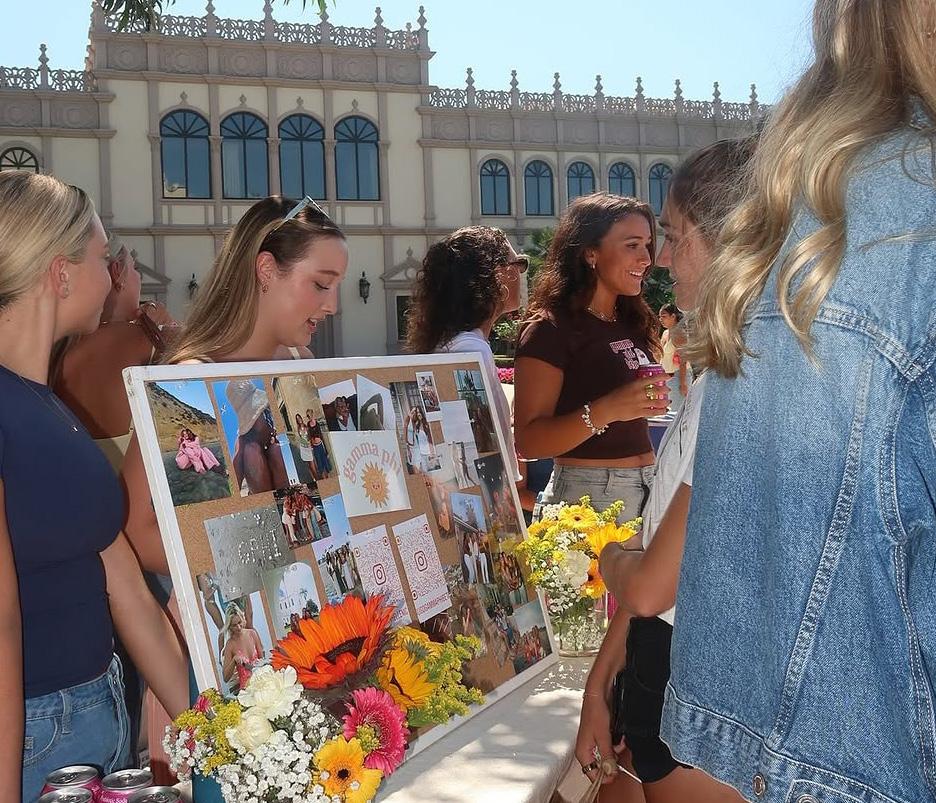
Alex expressed her agreement with this view.
“I’ve thought about it,” Alex stated. “Obviously running a club is a lot of work. It requires a lot of organization, a lot of time but I have thought about it. I would like to see encouraging other people to start clubs, to get to know other people, to bring other people in and to share and cultivate ideas together. I think it’s really beneficial.”
Kaylor expressed her
openness to starting a new club.
“I think over the next four years if I’m really intrigued by something I wouldn’t be opposed to start my own club,” Kaylor said.
Quattlebaum also shared thoughts of starting his own club.
“If I could get a good idea, I probably would [start a new club],” Quattlebaum expressed.
The Alcalá Bazaar offers a wide variety of clubs for all students to look into and try
out from clubs and affinity groups to sororities and fraternities. If there’s anything more a student wishes to see, they are encouraged to take the steps to share their interest with the rest of the student body at the next Alcalá Bazaar. As long as students are open to adding to the diverse array of clubs, the Alcalá Bazaar will always have something to offer to every Torero looking for new friends and a place to belong.
LAUREN CEBALLOS EDITOR-IN-CHIEF
Before streaming platforms emerged, TV shows would drop one episode at a time during the week. Families would gather around the box with moving pictures for appointment TV. Once streaming appeared, viewers no longer had to wait seven days to find out how the cliffhanger that was introduced in the last two minutes would end.
While watching a weekly episode can be romanticized, viewers can still make an event out of a show that is released all at once. People are no longer forced to plan their week around an episode of TV. Audiences can have more control over when they want to watch it and more freedom to coordinate with their friends.
Now we can watch it all at once and “binge” a show if you will — watching the episodes all the way through without stopping. Streaming also allows us to dictate our times of watching even if it is not all episodes after the other.
But now, streaming platforms are taking back our freedom and bringing back the week-long wait for our new favorite episodes of whatever show we’re watching.
Netflix recently released “Wednesday” in this format. The show first aired in November of 2022 and it blew up throughout the media, drawing new eyes to the popular original “Addams Family.” Following the release came lots of buzz for the show, prompting the creation of a new season. Fans patiently awaited the season’s release and were met with a trailer revealing the split-season release. The show dropped the first four episodes of the show on Aug. 6 and the final four came out on Sept. 3.
As a Netflix original, thanks to the platform’s vertical business model, Netflix has control over the distribution and production of the show. Netflix collects the internal data of its users data to determine its content. Without drawing in more users and viewers, they would not be able to keep collecting that data and remain successful. One way that they can do this is by breaking up the release of a show to draw audiences in.
In USD language, it’s like Pizookie Tuesday. The fivedollar pizookie gets you in the door but the fact that you likely missed your window to get SLP
dinner after class so you could get pizookies with your friends, causes what would be five dollars, turn into dinner and a drink too. “Wednesday” is the pizookie. In the month between Aug. 6 and Nov. 3, Netflix users likely found a show, a movie, or both that they got hooked on. They were then met with the classic “suggestions” and “recommendations” that bring and keep people in.
The slow show release is not for our benefit, but a benefit for the company. Netflix isn’t alone in doing this however.
My personal pet peeve was Amazon Prime Videos’ similar tendencies. I love the show
“The Summer I Turned Pretty.”
It is a show that is exclusive to Amazon Prime Video and with that, they decided to release one episode a week. The first two episodes were released on July 16, followed by one episode every following Wednesday.
I understand that a possible reason for wanting to release the show one episode at a time would be to increase viewer engagement, but being the stubborn person that I am — it made me want to watch the show even less. I found myself seeing how long I could wait throughout the week before I watched it so it could be down to one less view as long as possible and I would try to watch the episodes back to back. I wanted to watch the show how I wanted to watch the show. I didn’t want someone or something else to control that.
The whole point of streaming platforms is to provide a wide library for the people who use it.
The way I see it is, I’m paying for it — so give it to me. Give me the shows that I want to watch one the release date — the entirety of the show. It would let me delete my subscription if I wanted to and I could control my viewing habits. I could personally decide to watch it once a week or watch it all in one sitting because I might have more time on a specific day.
I think the viewers should have a say in what they watch and when they watch it. Our data is already being collected by the algorithm. They know what we want, they are just keeping it from us, dangling it in front of our face. The market has grown so much for these platforms and they are trying to ensure that we keep it growing.
I vote that these streaming services give the power back to the viewers and relinquish some control, they just might get some stubborn viewers back.
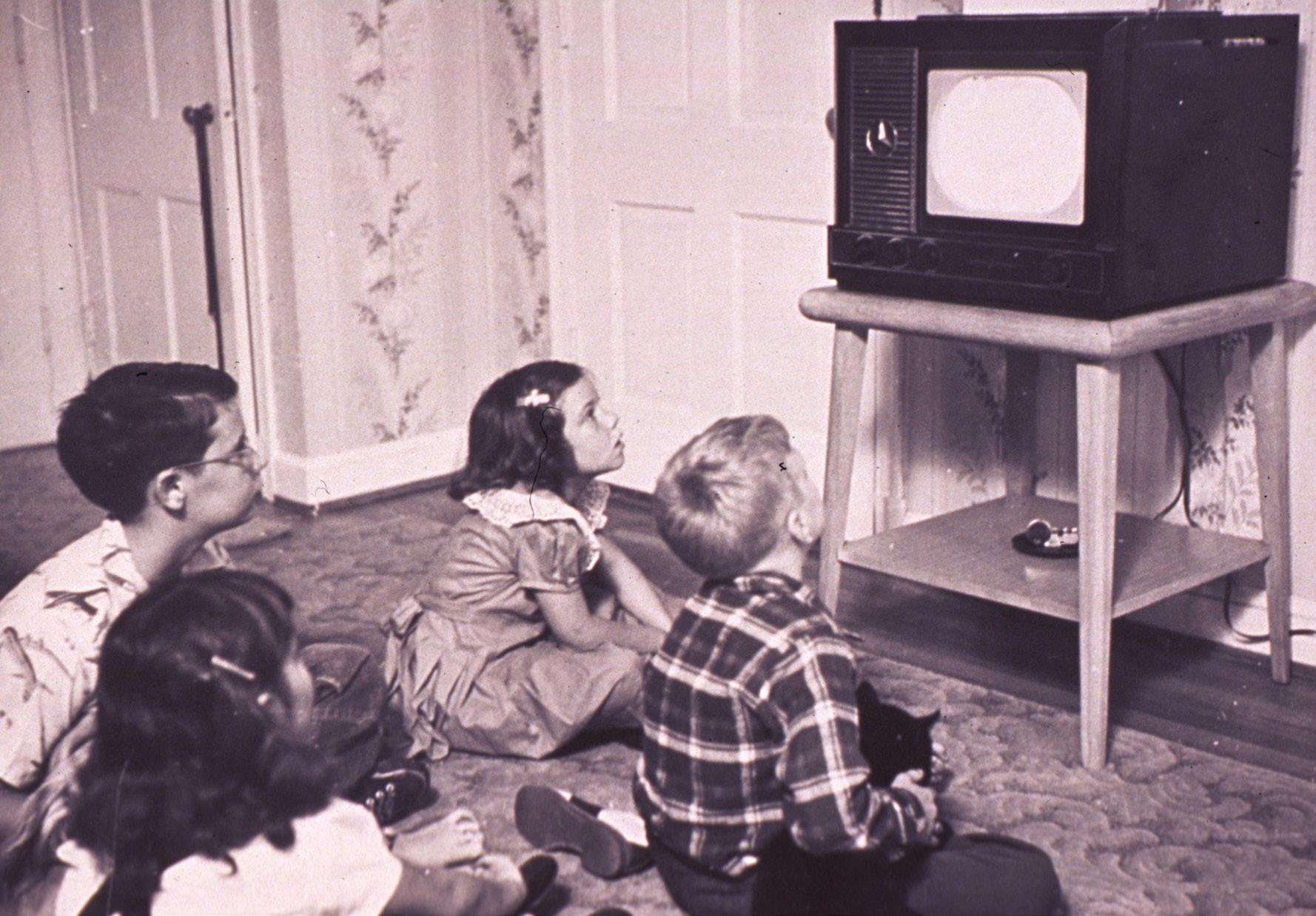
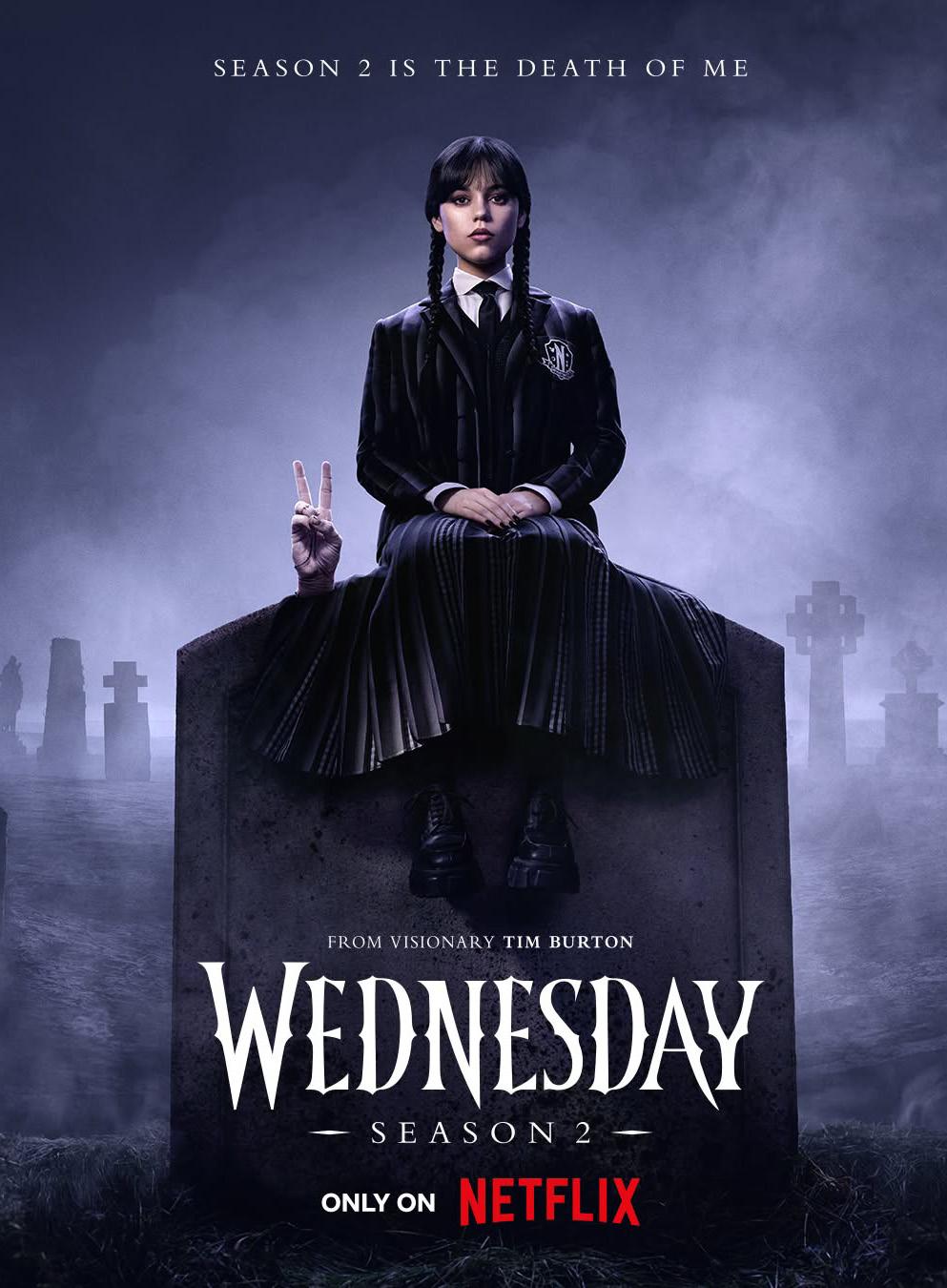
Correction: In last week’s issue of The USD Vista, an individual’s pronouns were incorrectly listed. We regret this error.

Last week’s crossword answers:

The views expressed in the editorial and op-ed sections are not necessarily those of The USD Vista staff, the University of San Diego, or its student body.
PRIYA COOPER SPORTS EDITOR
USD’s swim team opened up their fall season at home at USD’s Sports Center pool this Friday, Sept. 19. While the diving season hasn’t officially started yet, the majority of the swim team competed against SDSU. The divers have their first meet along with the swimmers in October at Pepperdine on Saturday, Oct. 4.
The pentathlon was against Torero rivals, the SDSU Aztecs and is an athletic style competition with at least five distinct events. USD had 21 student-athletes compete in a series of races. The season opener had eleven events total and SDSU dominated with a 33-24 triumph over USD.
The pentathlon used headto-head scoring, so points were awarded to only the top three finishers from each squad. The teams also swam additional races at USD on Friday. Some of the events were not scored in the final results, but gave both the Aztecs and Toreros benchmarks to continue their early season training as the competitions have only just begun.
USD junior Skylar Bruner started the new season off to a strong start as she finished with a time of 5:23.15. She commented on her emotions following the first race of the season.
“I’m super excited for this year,” Bruner said. “The vibes are really high on the team, and I am pumped for another year with USD Swim and Dive. We’re in a new conference this year, the Big West, so we’re planning to get our footing and swimming fast.”
Bruner’s energy was echoed by USD Head Swim and
Dive Coach Mike Keeler, who reflected on the team’s performance in the pentathlon in a post-meet interview.
“They did a great job and had a little baptism by fire for our new people,” Keeler said.
“There were nine events in about an hour and 45 minutes. For most of them, they held up really well. Sometimes it’s a struggle. I thought they did a great, great job this year, every event getting out there and competing. At this time, they set themselves up in a nice spot to start the season.”
Keeler also talked about looking ahead to the distance competition coming up next week, which differs from a typical competition as it focuses on longer races.
“[We are] just looking to continue our training process,” Keeler said. “It’s just like I said we are only on week three of our training. It’s a 22-week season till our championships. Next week we will swim some longer events, still not quite traditional events, but just to step forward as far as distance.”
Building on the team’s start, junior Elle Ramos emphasized how much it means to be back in the water competing for the Toreros. For her, the season isn’t just about records, but also about strengthening team bonds and making memories.
“I am most excited to make more amazing memories in the sport that I love, connect with the team, and compete this season,” Ramos said. “I cannot wait, we already started off strong with this pentathlon and I’m already having the best experience here in San Diego.”
USD swim and dive also just entered the Big West conference and will be competing against new opponents during
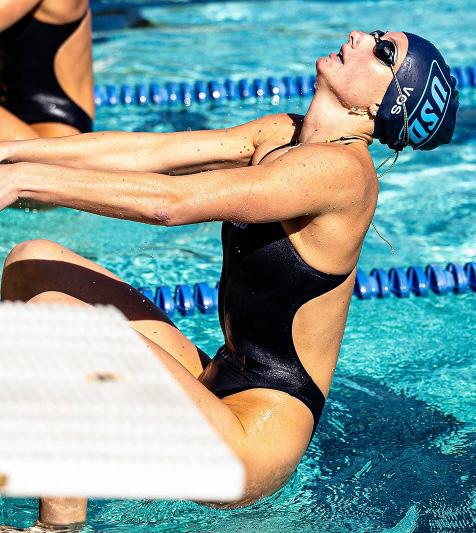
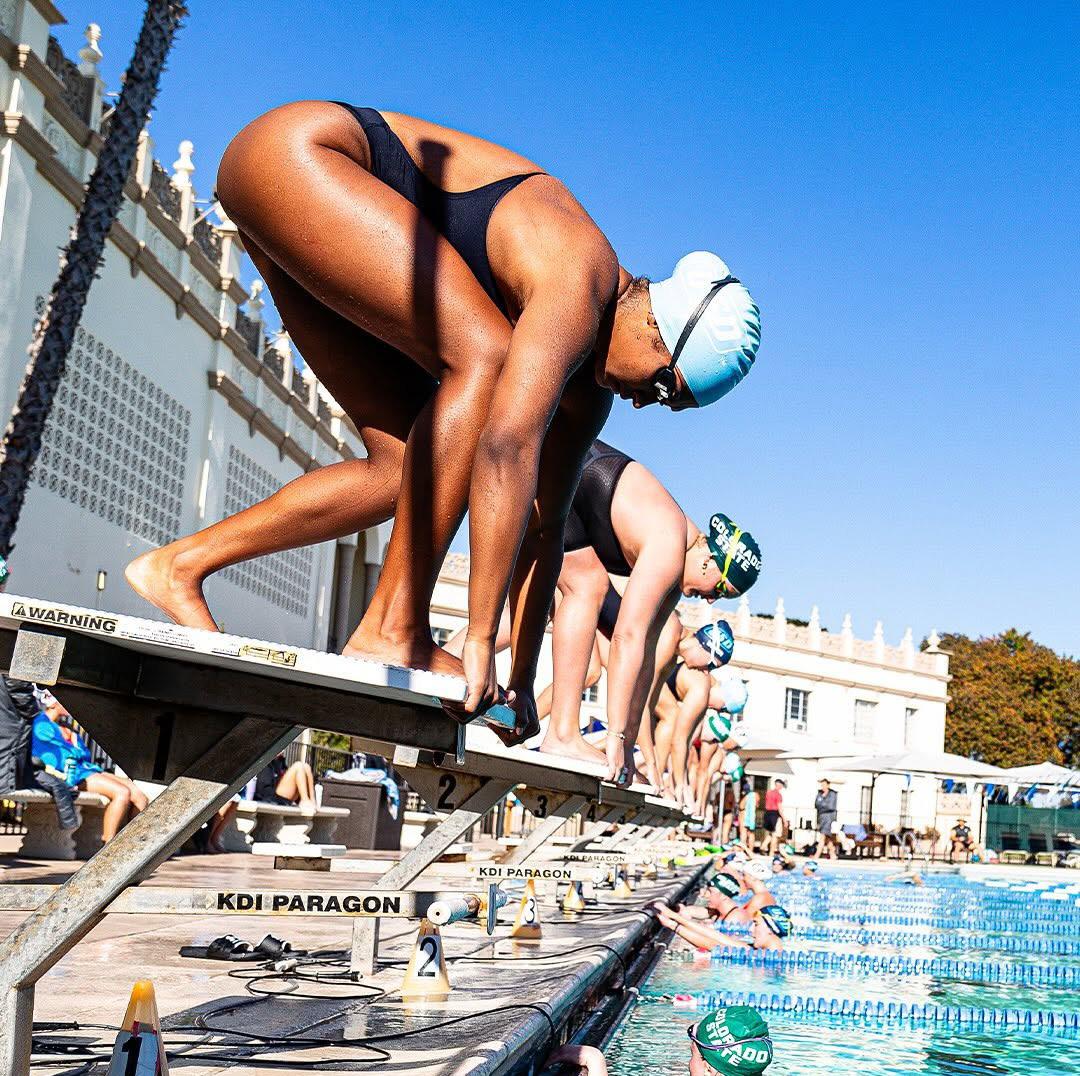
the upcoming season. USD sophomore Bethany Garcia is embracing the excitement of a new Big West season.
“We got off to a great start at yesterday’s meet and I’m super excited for what this season has in store for us,” Garcia said. “We just moved into a new conference, the Big West, so it’ll be a great opportunity to race some new teams.”
USD first-year Emma
Welch shared her excitement about joining the team and competing in a new conference, highlighting both the talent of her teammates and the promise of the season ahead.
“Honestly, what I am most excited for this season is just seeing how we perform as a team entering into a new conference,” Welch said. “We have an amazing team with such versatile swimmers and divers.
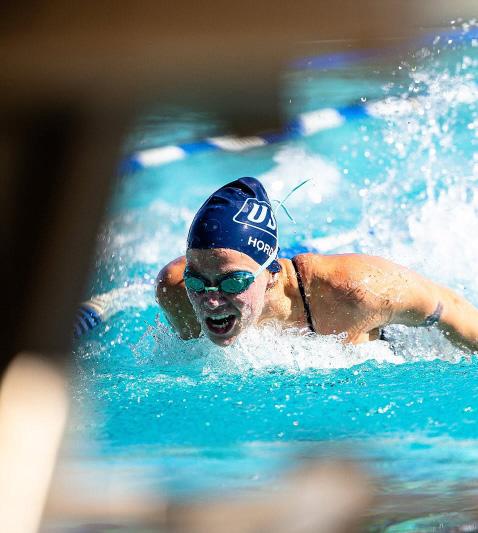
Everyone is so talented and devoted to putting in 100% all of the time and already after the first meet I can tell that we are going to have a great season. With Coach Mike and Shawna’s support, the newcomers this year, and the already fabulously talented group of girls that we have, I know that we are definitely going to make a name for ourselves in the Big West. I am just so grateful to be apart of the team and excited to see what we can accomplish.”
USD swim and dive is back in the pool this Friday, Sept. 26 back at USD against the Aztecs once again for a distance competition. The meet will start at 1 p.m. and the Toreros will look for redemption as the season progresses.
For USD senior Ava Delaney, this season carries extra significance as she looks forward to making the most of her final year while embracing the challenges of the team’s move to the Big West Conference.
“I am super excited for this season,” Delaney said. “As it’s my senior year, I am just ready to start strong and enjoy the time I have left with this team.”
USD women’s swim and dive has the excitement and determination from both veteran swimmers and newcomers that will set the tone for a promising season.
From Volleyball, Page 1 Coast up in Del Mar are two incredible clubs. I think we can capitalize on recruiting locally.”
The new USD beach volleyball team will welcome its first roster of up to 19 players in the fall of 2026. Although recruitment dates are still unclear, this news has rallied very exciting reactions from many volleyball enthusiasts around campus.
USD sophomore Mia Vorkoper, played volleyball in highschool and now plays at USD recreationally.
“I was so excited,” Vorkoper said. “I think it was a long time coming and will be so much fun to have on campus. I had multiple people sending me the Instagram post and talking about how excited they are.
The San Diego volleyball scene is already so big, so it’s great that we’re joining it. I went to USD’s indoor camps as a kid and depending on how USD Beach volleyball decided to do it there’s definitely an opportunity for more local engagement.”
USD junior Antony Morales, who occasionally plays with friends as-well as helps plan for Volleyball tournaments for the multicultural organizations on campus explains how welllit of a volleyball scene we have at USD and how the new beach volleyball team will only elevate that. USD senior and Wellness Center front desk staff Jaya Evans talked about her excitement surrounding the new volleyball team.
“It’s exciting to see USD add its first beach volleyball team and
continue to expand opportunities for women in sports,” Evans said.
“From my perspective as a senior and a Wellness Center hospitality assistant, volleyball culture has definitely grown and gotten way more attention compared to when I was a freshman. It feels like more students are excited about the sport now, and it’s becoming a bigger part of our campus life. Since I’ll be graduating, I won’t be here to see the games in person, but if I stick around San Diego post-grad, I’d love to catch a match.”
In an article written by USD Athletics, USD President James T. Harris shared his take.
“With 17 miles of coastline and an average of 266 days of sunshine each year, San Diego is a mecca for beach volleyball,” Harris said. “And we have a long legacy of volleyball on this campus. Given the fact that our women’s volleyball team recently advanced to the Final Four for the first time ever, there’s absolutely no better place to play volleyball — either on the court or on the beach — than at USD.”
USD is actively looking for options to potentially build an arena on campus for the recently established team. Evans believes it’s a fantastic idea.
“Having an official court on campus not only provides the team with their own space but also shows real support and representation for women’s sports at USD,” Evans said.
“It will give the program visibility and
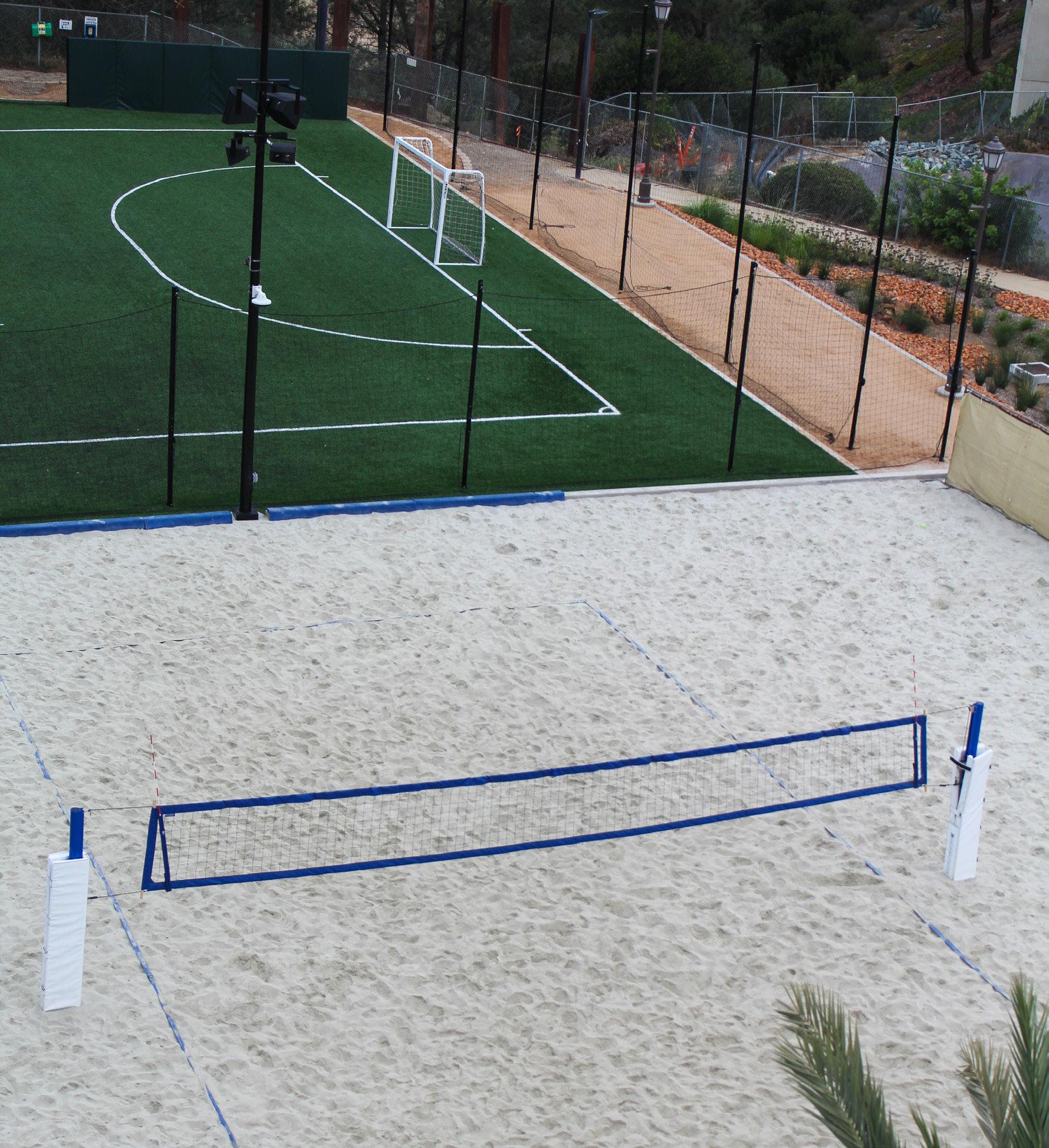
help bring more people out to support the athletes.”
While this is a popular thought many that sounds great, it might add to the costs of attending school
Toreros are filled with excitement, ready to watch this fun and trending sport come together. The team is scheduled to compete in the WCC season in the
Spring of 2027 and will eventually become USD’s 18th varisty sport when the team starts competition and 10th women’s program overall. The new court is currently being used recreationally by USD students.
